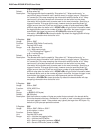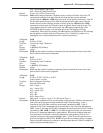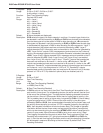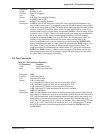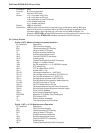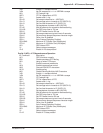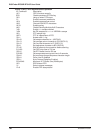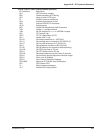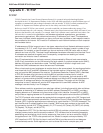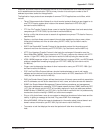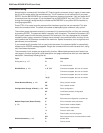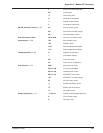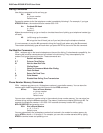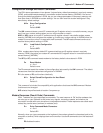
RASFinder RF300E/RF310E User Guide
RF300E/RF310E162
Appendix E - TCP/IP
TCP/IP
TCP/IP (Transmission Control Protocol/Internet Protocol) is a protocol suite and related applications
developed for the U.S. Department of Defense in the 1970s and 1980s specifically to permit different types of
computers to communicate and exchange information with one another. TCP/IP is currently mandated as an
official U.S. Department of Defense protocol and is also widely used in the UNIX community.
Before you install TCP/IP on your network, you need to establish your Internet addressing strategy. First,
choose a domain name for your company. A domain name is the unique Internet name, usually the name of your
business, that identifies your company. For example, Multi-Techs domain name is multitech.com (where .com
indicates this is a commercial organization; .edu denotes educational organizations, .gov denotes
government organizations). Next, determine how many IP addresses you’ll need. This depends on
how many individual network segments you have, and how many systems on each segment need to
be connected to the Internet. You’ll need an IP address for each network interface on each computer
and hardware device.
IP addresses are 32 bits long and come in two types: network and host. Network addresses come in
five classes: A, B, C, D, and E. Each class of network address is allocated a certain number of host
addresses. For example, a class B network can have a maximum of 65,534 hosts, while a class C
network can have only 254. The class A and B addresses have been exhausted, and the class D and
E addresses are reserved for special use. Consequently, companies now seeking an Internet
connection are limited to class C addresses.
Early IP implementations ran on hosts commonly interconnected by Ethernet local area networks
(LAN). Every transmission on the LAN contains the local network, or medium access control (MAC),
address of the source and destination nodes. The MAC address is 48-bits in length and is non-
hierarchical; MAC addresses are never the same as IP addresses.
When a host needs to send a datagram to another host on the same network, the sending application
must know both the IP and MAC addresses of the intended receiver. Unfortunately, the IP process
may not know the MAC address of the receiver. The Address Resolution Protocol (ARP), described
in RFC 826 (located at ftp://ds.internic.net/rfc/rfc826.txt) provides a mechanism for a host to
determine a receiver’s MAC address from the IP address. In the process, the host sends an ARP
packet in a frame containing the MAC broadcast address; and then the ARP request advertises the
destination IP address and asks for the associated MAC address. The station on the LAN that
recognizes its own IP address will send an ARP response with its own MAC address. An ARP
message is carried directly in an IP datagram.
Other address resolution procedures have also been defined, including those which allow a diskless
processor to determine its IP address from its MAC address (Reverse ARP, or RARP), provides a
mapping between an IP address and a frame relay virtual circuit identifier (Inverse ARP, or InARP),
and provides a mapping between an IP address and ATM virtual path/channel identifiers (ATMARP).
The TCP/IP protocol suite comprises two protocols that correspond roughly to the OSI Transport and
Session Layers; these protocols are called the Transmission Control Protocol and the User Datagram
Protocol (UDP). Individual applications are referred to by a port identifier in TCP/UDP messages. The
port identifier and IP address together form a “socket”. Well-known port numbers on the server side
of a connection include 20 (FTP data transfer), 21 (FTP control), 23 (Telnet), 25 (SMTP), 43 (whois),
70 (Gopher), 79 (finger), and 80 (HTTP).
TCP, described in RFC 793 ( ftp://ds.internic.net/rfc/rfc793.txt) provides a virtual circuit (connection-
oriented) communication service across the network. TCP includes rules for formatting messages,
establishing and terminating virtual circuits, sequencing, flow control, and error correction. Most of
the applications in the TCP/IP suite operate over the “reliable” transport service provided by TCP.
UDP, described in RFC 768 (ftp://ds.internic.net/rfc/rfc768.txt) provides an end-to-end datagram
(connectionless) service. Some applications, such as those that involve a simple query and



